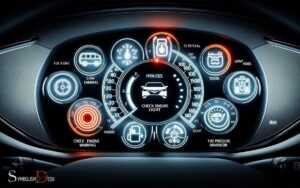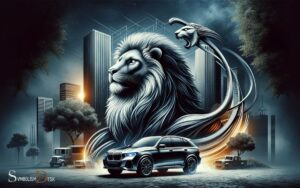What Does Gatsby’s Car Symbolize? Explain!
Gatsby’s car in F. Scott Fitzgerald’s “The Great Gatsby” is emblematic of the era’s opulence, the illusion of the American Dream, and the ultimate hollowness of the upper class’s excessive lifestyle.
It’s not just a sign of wealth but also a metaphor for Gatsby’s ambitions and the moral decay of society.
The car represents:
Gatsby’s car is a poignant emblem of his tragic quest for love and acceptance in the morally vacuous high society of the 1920s.
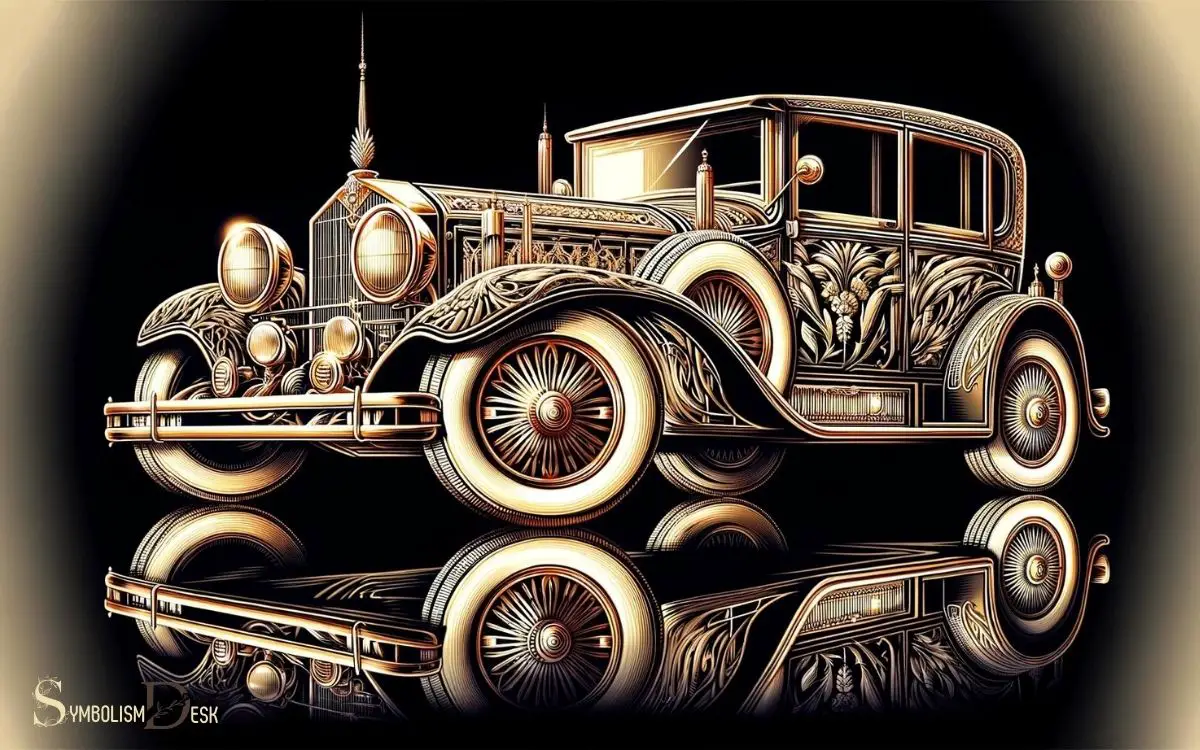
Key Takeaway
The Symbolic Essence of Gatsby’s Car in “The Great Gatsby”
| Symbolism Aspect | Representation in the Novel | Consequence |
|---|---|---|
| Wealth and Status | Gatsby’s yellow Rolls-Royce | Desire for social ascent |
| American Dream | Material success epitomized by the car | Corruption and ethical compromise |
| Moral Decay | Involvement in the hit-and-run | Carelessness of the wealthy class |
| Tragedy and Irony | The car’s role in Gatsby’s demise | The futility of Gatsby’s ambitions |
Gatsby’s Car as a Status Symbol
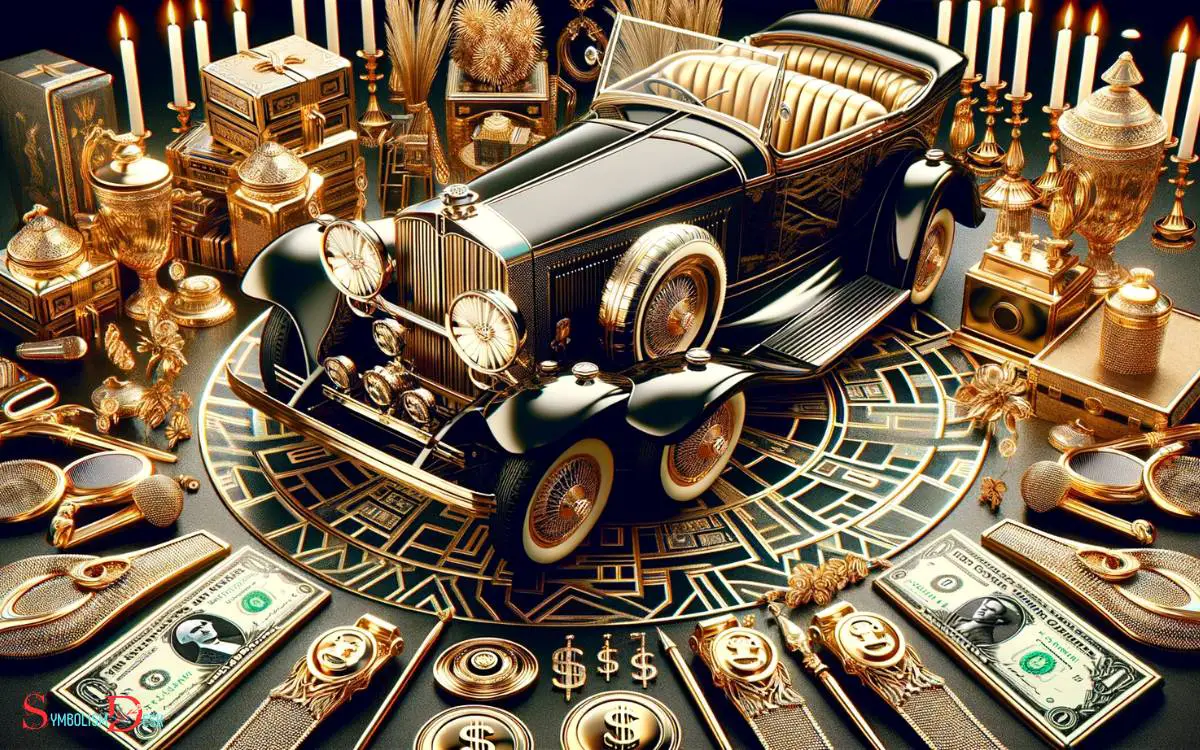
Gatsby’s car symbolizes his status as a wealthy and powerful figure in society. The car, a luxurious and flamboyant yellow Rolls-Royce, serves as a visual representation of Gatsby’s opulence and success. Its bright color and grandiose appearance make it impossible to ignore, reflecting Gatsby’s desire to be noticed and admired. The yellow car symbolism Great Gatsby emphasizes not just his wealth but also the ostentation and performative nature of his lifestyle. However, the car also becomes a harbinger of tragedy, representing how material success can lead to destruction when combined with reckless ambition.
In Fitzgerald’s “The Great Gatsby,” the car becomes a focal point, signifying Gatsby’s ascent to The upper echelons of society. It epitomizes his material wealth and the lengths he goes to in order to impress and win over Daisy.
The car not only showcases his affluence but also acts as a tool for Gatsby to assert his prominence in the social hierarchy. Its extravagant nature reflects his desire to display his prosperity and attract attention.
However, beneath this facade of grandeur lies a deeper complexity that unravels the recklessness and impulsiveness of Gatsby’s character.
The Recklessness and Impulsiveness of Gatsby’s Car
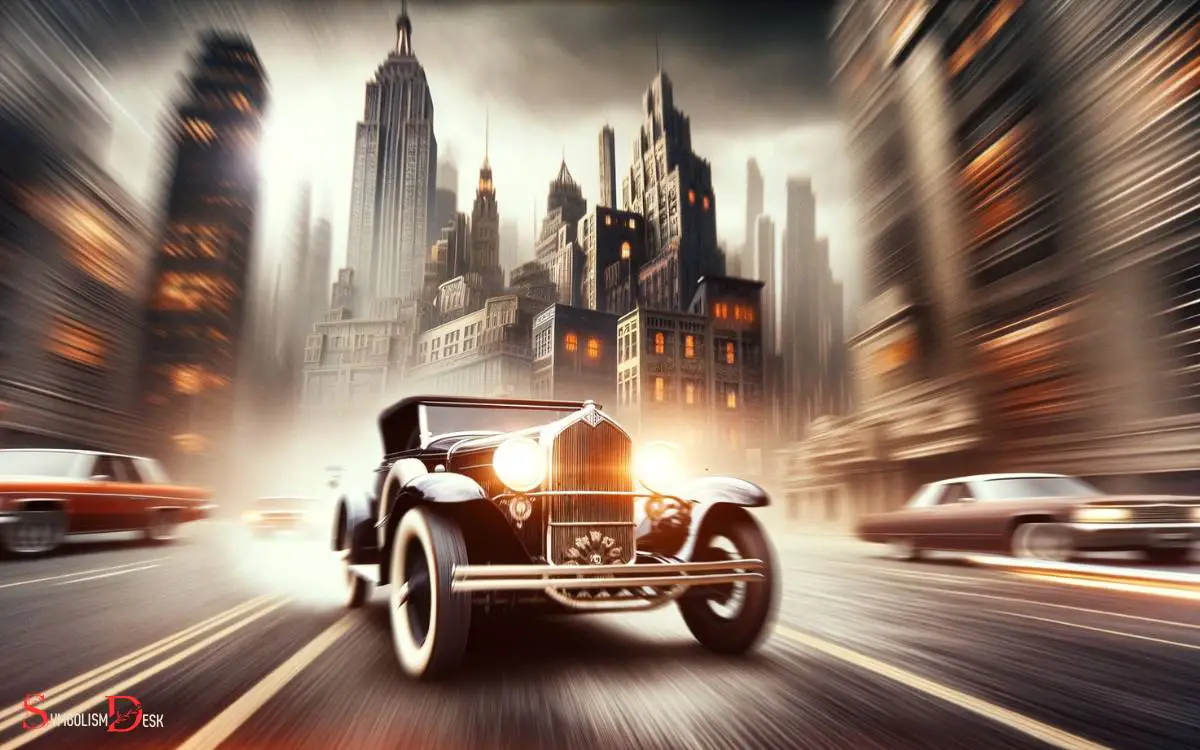
The recklessness and impulsiveness associated with Gatsby’s car are evident in its frequent use for high-speed joyrides through the city streets.
This behavior reflects Gatsby’s own impulsive nature and his tendency to live in the moment without considering the consequences. The car becomes a symbol of his disregard for societal norms and safety, as he uses it to indulge in his desires without restraint.
This recklessness ultimately leads to tragic consequences, highlighting the destructive nature of impulsiveness.
| Recklessness | Impulsiveness | Consequences |
|---|---|---|
| High-speed joyrides | Impulsive behavior | Tragic outcomes |
This table serves to evoke the emotions of danger, thrill, and tragedy associated with Gatsby’s car and its use, emphasizing the destructive impact of recklessness and impulsiveness.
Gatsby’s Car as a Reflection of His Obsession With Daisy
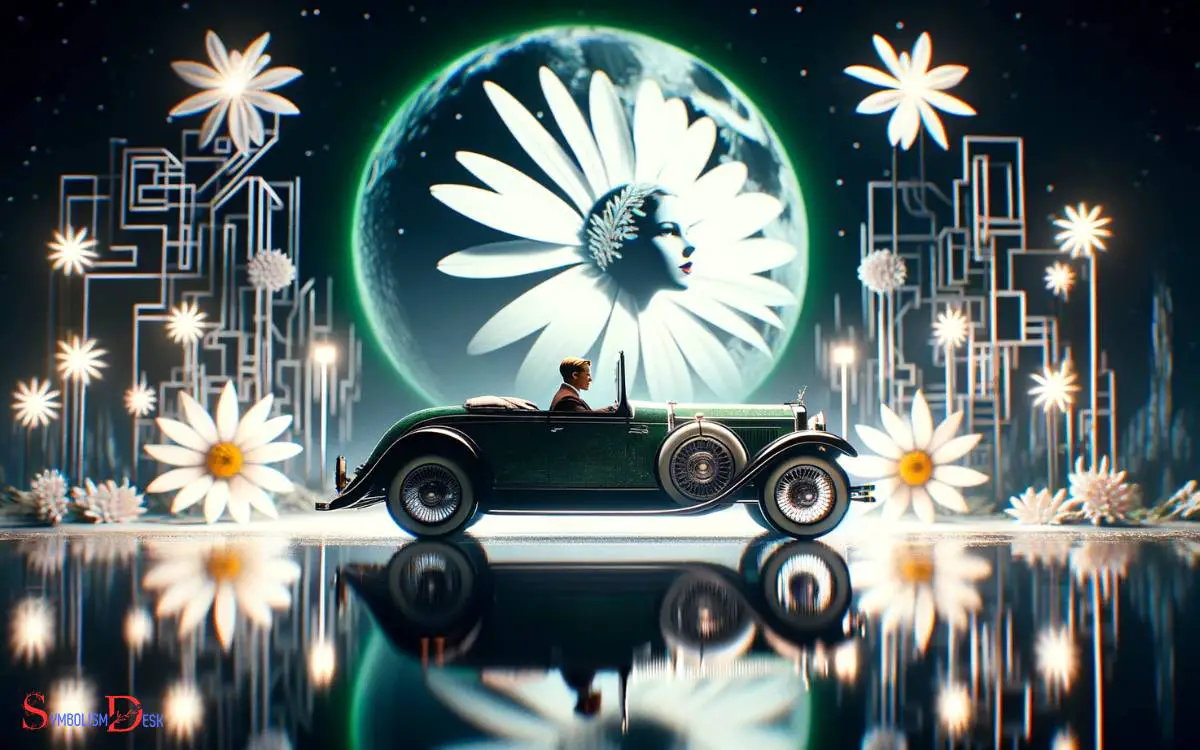
Symbolizing his obsession with Daisy, Gatsby’s car represents his unyielding pursuit of her affection and the lengths to which he will go to win her over.
The opulence and flamboyance of Gatsby’s car mirror his extravagant displays of wealth and luxury, all designed to captivate Daisy’s attention.
His lavish car becomes a symbol of his relentless determination to impress and allure Daisy, showcasing the extent of his infatuation with her.
Furthermore, the reckless and heedless manner in which Gatsby drives his car reflects his single-minded focus on Daisy, often disregarding the consequences of his actions.
Gatsby’s car, therefore, serves as a tangible manifestation of his fervent longing for Daisy, illustrating the depths of his emotional attachment and the profound impact she has on his life.
Gatsby’s Car and the Destructive Nature of Wealth
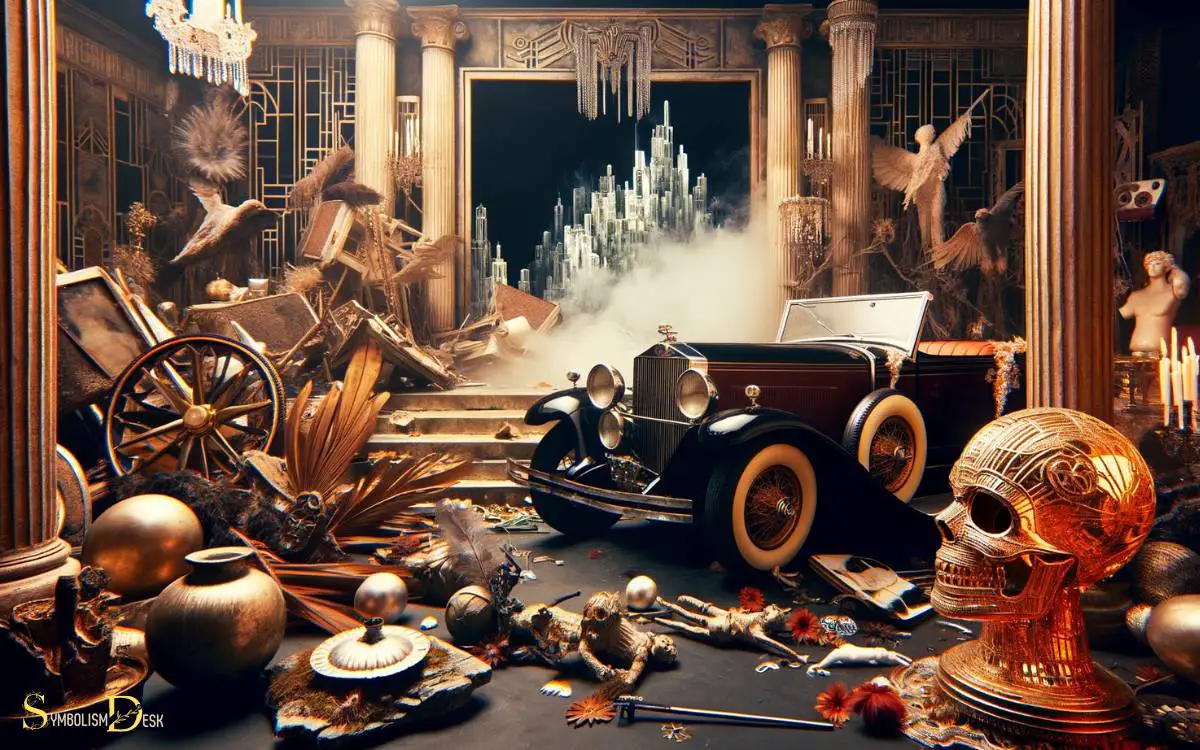
An emblem of opulence and excess, Gatsby’s car reveals the destructive influence of wealth in his pursuit of Daisy. The grandeur and extravagance of Gatsby’s car symbolize the corrupting power of wealth.
The reckless and dangerous way in which Gatsby drives his car, as seen in the novel’s tragic climax, illustrates how his abundance of wealth has led to a disregard for consequences and a sense of invincibility.
This destructive nature of wealth is further exemplified by the use of Gatsby’s car in illegal activities, reflecting the moral decay that accompanies the pursuit and possession of immense riches.
The car becomes a metaphor for the destructive impact of wealth on Gatsby’s character and the tragic outcomes that result from the unchecked pursuit of affluence.
The Tragic Irony of Gatsby’s Car
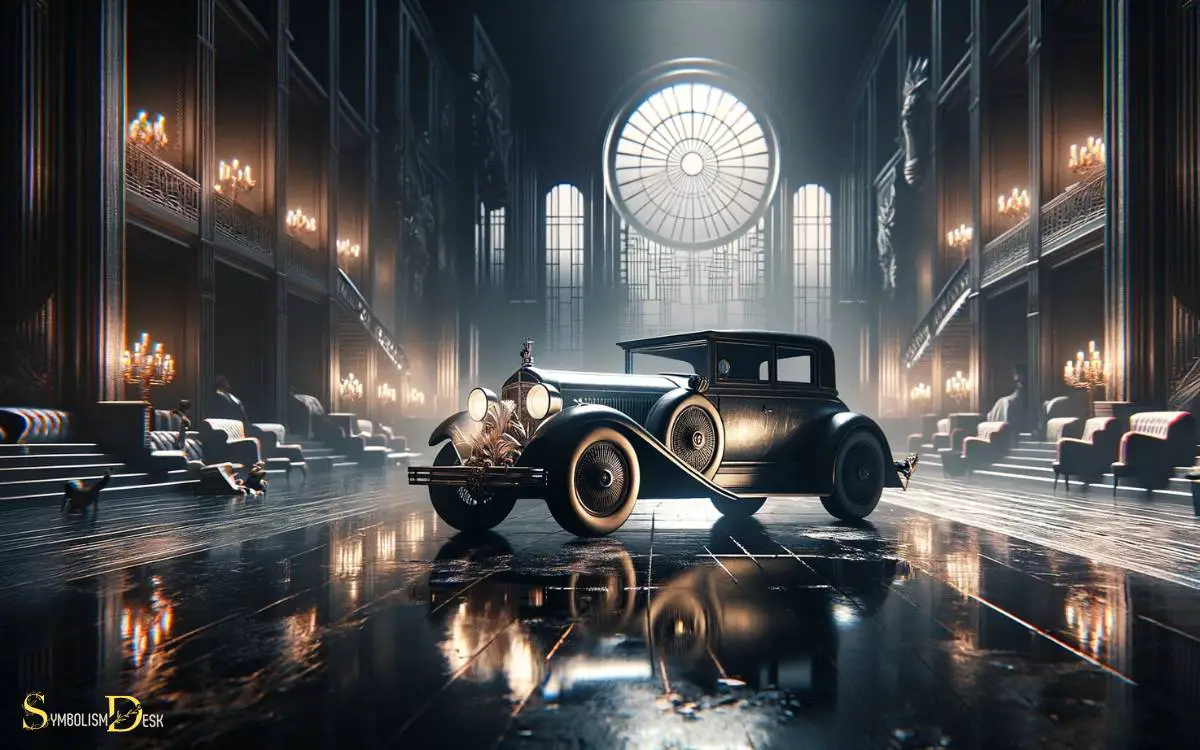
Gatsby’s car, an emblem of wealth and allure, embodies tragic irony as it becomes a catalyst for his downfall.
On the surface, the vehicle epitomizes Gatsby’s opulence and success, serving as a symbol of his attainment of the American Dream. However, this very symbol of prosperity ultimately leads to his tragic demise.
The car, a luxurious status symbol, becomes the instrument of tragedy and death, starkly contrasting its initial representation.
Below is a visual representation of this tragic irony:
| Symbolism | Reality |
|---|---|
| Wealth | Destruction |
| Success | Fatality |
| Allure | Tragedy |
| Prestige | Demise |
| Aspiration | Downfall |
This table illustrates the stark contrast between the symbolism initially associated with Gatsby’s car and the tragic reality it ultimately brings.
The car’s portrayal as a coveted emblem of success is tragically overturned, serving as a poignant reminder of the fleeting nature of material wealth.
Conclusion
Gatsby’s car serves as a powerful symbol throughout the novel, representing his desire for wealth, status, and ultimately, his pursuit of Daisy. Interestingly, in F.
Scott Fitzgerald’s “The Great Gatsby,” it is estimated that there were only 13,000 registered cars in the entire United States in 1900, a statistic that highlights the rarity and exclusivity of owning a car during the time period in which the novel is set.
This further emphasizes the significance of Gatsby’s car as an emblem of his aspirations and downfall.



